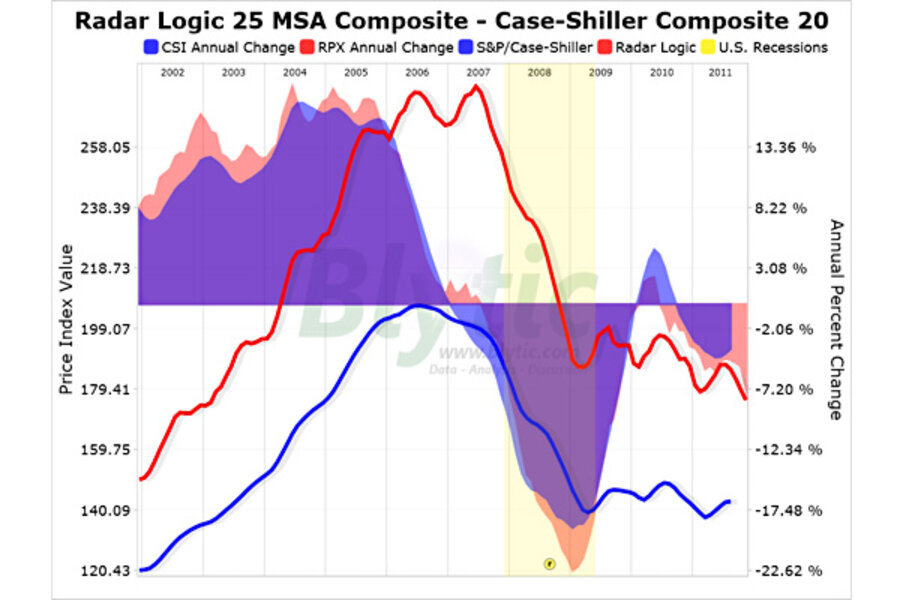Home prices fall again
Loading...
As I demonstrated in prior posts, given their strong correlation, the home price indices provided daily by Radar Logic, averaged monthly, can effectively be used as a preview of the monthly S&P/Case-Shiller home price indices.
The current Radar Logic 25 MSA Composite data reported on residential real estate transactions (condos, multi and single family homes) that settled as late as November 25 and averaged for the month indicates that with slowing summer/fall transactions has come a notable decline of prices (the typical trend) with the national index declining 1.8% since October and falling 7.11% below the level seen in November 2010.
The Radar Logic index will likely be capturing an decline in prices from now until early 2012 as transactions continue to trend down.
Look for tomorrow's S&P/Case-Shiller home price report to reflect this declining trend though to a lesser degree due to its three month rolling-average nature with prices moderately higher.







